Trending
Opinion: How will Project 2025 impact game developers?
The Heritage Foundation's manifesto for the possible next administration could do great harm to many, including large portions of the game development community.

Featured Blog | This community-written post highlights the best of what the game industry has to offer. Read more like it on the Game Developer Blogs or learn how to Submit Your Own Blog Post
Double Damage Games co-founders Erich Schaefer and Travis Baldree employ an off-the-cuff style to create the look and feel of Rebel Galaxy’s ships, combat, and grungy, space-cowboy setting.

Author's note: And Then There Were Two is a serialized account of the making of Rebel Galaxy by Double Damage Games. The story originated on Episodic Content, my blog devoted to nonfiction stories of videogame design, development, and culture.
Written by David L. Craddock
Chapter 1: Downsizing
Chapter 2: Driving in the Dark
Chapter 3: Smoke and Mirrors [To be published the week of Dec. 15, 2015]
Personal Space
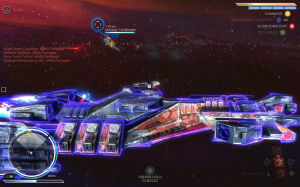
Activating a force field is as easy as holding down the right bumper on the X360 controller. The trade off: you can’t fire while shields are up.
Travis Baldree was frustrated. He’d been picking his way through a graphics package for hours, poring over options to put the finishing touches on a character he’d been working on. It was an alien, one of many extraterrestrials that players would meet in the game he and Erich Schaefer were developing. The software at his disposal was dense, full of tools and sliders and values to modify.
That was the problem: it was too dense. All he needed to do was create an idle animation—game development parlance for the fidgety movements characters make when they’re standing around talking. Creating idle gestures was a simple task that his software insisted on overcomplicating, and time was money, almost literally. The package had been pricey.
After a few hours, he’d had enough. “I went and bought a Kinect for $30 used, and I stood in front of it and waved my arms around for a little while, and I imported it into 3D Studio Max, and we had some character animations and we were done.”
For Travis, the fact that he was able to make these and other decisions on the fly was as satisfying as flailing around in front of an Xbox camera for a few hours instead of fussing interminably with bloated software. He was no longer in charge of a company made up of dozens of employees who might balk at not being consulted on every little decision. “Two people seems just great to me. One person is too isolated because you don’t have enough friction over design decisions. It’s too much of an echo chamber for yourself: you do stuff and say, ‘This is probably good.'”
Erich Schaefer was enjoying being one half of a two-person organization as much as Travis. He still worked out of his house in San Francisco, but unlike during his time as a co-owner of Runic Games, he didn’t have to cede design work—his favorite part of game development—to the designers he had hired for the job.
For Travis, drawing a line between work and home was essential. He is a husband, a father to two adorable but boisterous little girls, and owner of an equally rambunctious dog. He is also a self-professed workaholic. Maintaining a separate workspace enables him to clearly delineate his responsibilities as husband, father, game programmer, and dog walker.
“If I have to get something done and I feel a lot of pressure to do it, I can go home and nobody’s going to say, ‘Why are you leaving the office at 5:00?’ That specific pressure doesn’t exist: the pressure of presence. I can work wherever I want.”
Cruising around Seattle, Travis and Erich rented a small space in an office park. The new digs were perfect: two sizeable rooms partitioned by a wall of glass, which meant Erich would have space to work when circumstances dictated he fly up from the Bay Area. There was even a conference room and a small lobby with a front desk where a receptionist could field calls and deliveries.
Of course, neither of Double Damage Games’s co-founders planned on hiring anyone else, ever. Even one additional employee would render their company’s name obsolete, after all. Still, trimmings like conference rooms and front desks rounded out the office space nicely, and Travis’s keepsakes imbued it with personality: dozens of old computers—including a vintage Commodore 64—and classic games replete with boxes and instruction manuals. From the moment he placed them reverently along desks and shelves, he felt at home-away-from-home.
Looking to the Stars
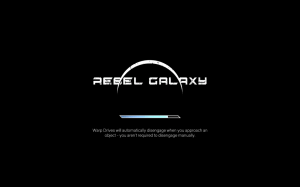
Adding tool tips allowed Erich and Travis to communicate essential functions to players.
Travis’s workaholic streak had set in long before he and Erich had split off from Runic Games to form their asynchronous company. Growing increasingly dissatisfied at work, Travis asked his fellow co-founders—Peter Hu and Max and Erich Schaefer—if they’d mind if he took the defunct “spacegame” prototype home so he could experiment with it in his spare time. Soon enough, Travis was having much more fun populating his rendition of outer space than he was overseeing work stuff at Runic.
Because Travis’s and Erich’s departure from Runic was amicable, Max and Peter were happy to let them take spacegame with them. “It made sense to do that as our first project,” Travis said. “It had been Erich’s original pitch that I had kind of glommed on to, and added this broadside [combat] component to, so we both already had interest in it. I’d already built combat prototypes, which were terrible compared to anything we have now. I keep them around just to laugh. So we decided to do that project.”
Erich was even more excited to return to his spacegame concept than Travis, and not just because it had been his idea. Although he’d grown up on a steady diet of RPGs like Wizardry and Ultima on his Apple II, Erich held equal appreciation for science fiction games and settings. One of his favorites was Wing Commander: Privateer, a space combat game he’d discovered at Blizzard North.
Privateer lets players arm their ship with turrets and missiles, then jet off to space and shoot down enemy vessels. But the game has more going for it than dogfights and explosions. Between combat missions, players can work odd jobs, like smuggling cargo between colonies and star systems. Every scenario is generated randomly, offering a potentially limitless supply of missions; completing missions earns players money they can spend on ship upgrades.
More than its bottomless well of content, Erich was drawn in by Privateer’s atmosphere. The game exuded vibes of solitude and grunginess. Space was cold, dark, and lonely. Ships and stations were dirty and ramshackle. Dave Brevik had been the one to introduce Erich to the game while they were working on the original Diablo. Erich and Max would hang out in Dave’s office for hours, watching over his shoulder as he ran cargo and decked out his ship.
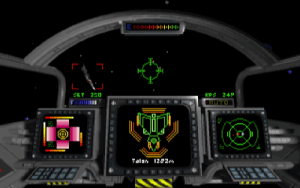
Wing Commander: Privateer.
Rather than play the game and let his friends spectate, as Dave had, Erich preferred to play by himself back at the apartment he’d shared with Max in the early ’90s. Traveling through space in a bucket of bolts that could be built up into a fearsome vessel seemed more appropriate as a solo odyssey than a group effort. “I just loved the idea of this open-ended spaceship game where you could do whatever you wanted. You could follow a storyline, or you could not; you could just engage in the fun combat and upgrade your ship. That’s something I always loved.”
Travis shared Erich’s love of Privateer. The grease and dirt of the seedier space stations, the melancholy mood of drifting through a black void, the strangeness of the alien NPCs, the cargo they trafficked—Privateer hadcharacter, and he and Erich wanted to transplant that character into spacegame, which they had taken to calling Rebel Galaxy. (Continued below.)
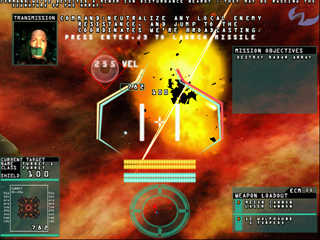
SabreWing 2, one of Travis’s early games developed at WildTangent.
Erich and Travis gleaned inspiration and motivation from numerous sources besides Privateer. “There’s another game I loved called Star Control—Star Control II was the best one—that was, again, you’re a spaceship commander, and it was all about making friends and enemies with these alien races, talking with these talking heads in space and threatening them, going through these dialogues,” Erich said.
Fate was the most popular game Travis designed back in his WildTangent days, but hardly the first. A longtime devotee of space sims like Wind Commander, he created two installments of SabreWing, a classic, cockpit-based sim that he’d had the freedom to develop free of pesky considerations like budgets and schedules. While he remains proud of his SabreWing games, he endeavored to move as far from its well-trod formula while making Rebel Galaxy. “I was kind of bored with the chase-the-reticle style of combat where you get in behind a guy, and then you follow them and keep them in your sights, and you wiggle back and forth, and shoot him with your lasers until he blows up. I’ve done that so many times.”
(Continued from above.) Double Damage’s co-founders saw eye to eye on the influences that would inform Rebel Galaxy. Dividing work was just as quick and easy. “Travis does everything,” Erich said simply. “I just do design. That means the combat balance, the economy, and I create all the missions. Actually, he usually makes the storyline missions, and then I take the technology he makes for those and turn them into all those random missions throughout the game. So all I do is work with data, design, and balance.”
From the outside looking in, Travis’s and Erich’s distribution of labor might seem a tad… uneven. Travis set the art direction for Rebel Galaxy, wrote every line of code that ticks away underneath its turret-laden hood, directed the production of sound effects, entered into agreements with assorted bands and freelancers to license music and artwork, and labored over character animations (at least until he hooked up his aptly threadbare Kinect camera). But that arrangement works just fine for Travis. It frees him to play to his strengths, while Erich plays to his.
“Erich’s really good at long-term progression in a game—at seeing that and being responsible for making sure it actually comes together, and the economy doesn’t fall apart as the game goes on. I tend to be more focused on mid-to-short-term progression: ‘I feel really good because I just got this gun; it feels nice because it has this sound, and visual effect, and it feels punchy, and this thing is dying faster than it was before.’ Together, I think that works really well.”
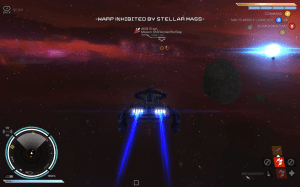
Rebel Galaxy automatically brings players out of warp speed when they draw near bodies that could damage their ship.
As it turned out, Erich was being too modest when he divulged his share of the responsibilities. “The other thing I do is I’m the only tester, really, until we got some QA guys recently,” he admitted. “I play the game all the time and tell Travis what I think we should do. But he does 90 percent of this game,” he insisted.
While Erich estimates that playtesting comprises a mere 10 percent of the Rebel Galaxy equation, Travis believes testing—and his tag team partner—plays a crucial part in the gameplay experience. “At the end of the day, Erich is responsible, in large part, for balance. He did most of our random missions. He plays everything, and we argue and discuss. I think we work really well together because our sensibilities are close enough that we’re not in constant disagreement, but we have enough disagreements that we refine things pretty well.”
Another common ground between the two developers: iterative design. Neither man likes the idea of drawing a clear roadmap to help them navigate the peaks and valleys of making a game. They prefer to drive around in the dark, leaving plenty of room for good ideas as they stumble forward.
Take Rebel Galaxy’s early soundtrack as an example. Travis had inserted an orchestral score reminiscent of the types of boldly-go-where-no-man-has-gone-before science fiction movies and games that influenced Rebel Galaxy’s design. After a few months, however, Erich had prepared to share bad news with his partner. The soundtrack just wasn’t doing it for him.
“The game kind of felt antiseptic. You’re out there in the loneliness of space, and here’s this electronic, space opera-y stuff. So when Travis switched it just on a whim—’Hey, let me throw in some of these tunes’—it was such an instant change. It was so cool.”
As usual, he and Travis were on the same page. Travis had thrown the epic soundtrack into Rebel Galaxy because, well, wasn’t that the sort of backdrop that went hand in hand with science fiction epics? Orchestral! Grand! Cultured!
Then, during a lengthy programming session, a song by the Black Keyes had piped through his earbuds. The song beamed from his computer and directly into his imagination. Rock music, he thought, made for a much better backdrop to flying around space and shooting down spaceships. It also fit in better with the sort of grungy, space-pirate vibe he and Erich wanted to carry over from games like Privateer. He ended up licensing a medley of garage blues rock tunes from artists like Blues Saraceno, Sam Wale, and The Blues News.
“A lot of the components did not fall into place until later, and it usually works that way. You drive in the dark for a little while, and then you turn on the headlights and see where you are.”
Staying on Target
Travis Baldree was frustrated. Again. Naval combat in Assassin’s Creed IV: Black Flag, the game that was informing the broadside combat he was building for Rebel Galaxy, had felt tactical, weighty, and satisfying. Rebel Galaxy was not projecting any such spirit, and he knew precisely why: the controls were too complicated.
To be fair, he’d been spending a great deal of time paring Rebel Galaxy’s design down to the most essential details. Gone was the idea of cruising over a planet and rappelling down to the surface, where players would control a squad of units and battle extraterrestrials, X-COM style. Rebel Galaxy’s gameplay would center on piloting a capital ship, and would employ a fully maneuverable camera that remained centered on the vessel at all times—as opposed to, say, a game like 1993’s X-WING, which seated players in the ship’s cockpit.
“That’s one of the things that always happens in cockpit sims: you have this very limited view of what’s going on,” explained Travis. “It’s just what’s in front of you; everything else can only be seen on a radar. You’re always this little cog on a big machine on the battlefield.”
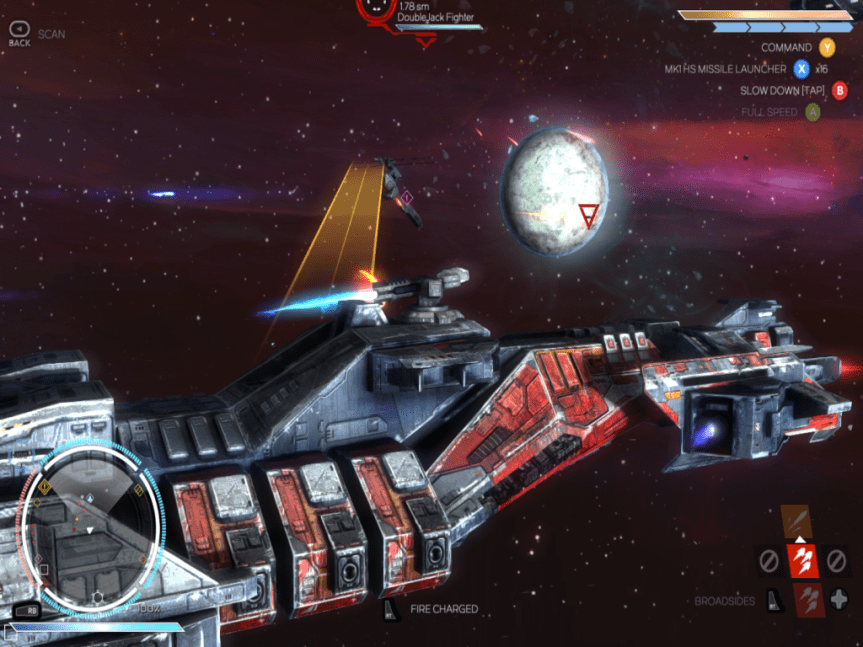
Broadside combat. Maneuver the ship so it’s parallel with your opponent, line up the aiming reticule, and fire. All necessary controls are listed at the screen.
At the outset of Rebel Galaxy, players would don their captain’s hat and take the controls of a junker. They could cruise around a galaxy populated with nebulas, asteroid fields, space stations, and pirate ships looking for a fight. There would be a storyline to follow, as well as a jobs board from which players could embark on missions of varying difficulty. Completing story and contract missions earned credits that players could use to upgrade components such as armor, engines, weapons systems, and miscellaneous parts, and eventually purchase higher-end capital vessels—the ultimate rags-to-riches tale for space pirates aspiring to become the next Han Solo.
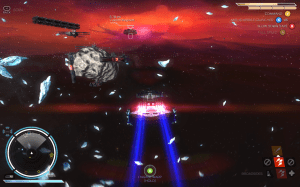
Most of the missions involved fighting. Although Erich and Travis planned to create over a dozen galaxies with a variety of activities, ship-to-ship combat comprised the crux of Rebel Galaxy’s gameplay. Players would have to guide their lumbering capital ship into range, slowly turn to position themselves parallel to the enemy vessel, and then let fly. Combat was measured, strategic, and punchy. Or at least, it should have been.
In early prototypes, ships were festooned in cannons and turrets—too many, he decided. He knew players would welcome loads of weapons, but a convoluted control scheme would only frustrate and confuse them. As it stood, there were too many functions; attack options were buried two, three, or more button-presses deep.
There was one saving grace. Aside from a control scheme that was harder to wrap his hands around than a game of Twister, Rebel Galaxy’s battles were fun and rife with possibilities even in the infancy of its design. “It gave you a much more interesting sense of what was going on: ‘Oh, there’s an asteroid there and a guy on the other side of it, so I’m just going to go around this asteroid and use it as cover, and shoot when I pop out the other side.'”
Travis and Erich put their heads together and discussed ways to streamline the control scheme. Oftentimes, the best solutions came from players they watched interact with the game at trade shows like PAX South, which they attended in January 2015. Attendees flocked to the Double Damage Games booth, eager to take Rebel Galaxy for a test flight. Erich or Travis would hand them an Xbox 360 controller, give a brief overview of the controls, and stand back and observe. Every time players looked lost or fumbled with the controller, Erich or Travis would nudge them in the right direction—”Try using your boosters to go faster,” or “Press this particular button to raise your shields and deflect damage.”
The Double Damage duo watched attendees closely, jotting down notes. Back in the hotel every evening, Travis pulled up the code and added prompts at carefully-chosen moments to grease the skids for players. “If you’re not steering and you move forward for more than 10 seconds, and you haven’t bought at least this much worth of components yet, then we’ll tell you this about the boosters. Or if you hit the go button more than two or three times more than two or three times after you’ve maxed your throttle, we’ll show you a thing that says, ‘No, this is what you really want to do.'”
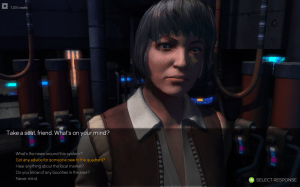
Travis created idle animations by recording himself in front of a Kinect.
Erich logged countless hours play-testing the game. Combined with feedback from trade show attendees, they finally chipped away at the cumbersome nature of the controls. Travis had programmed every turret system on the player’s ship to be selectable. Late in the game, players could purchase capital ships able to support up to 16 turrets. While formidable, the double-edged sword of wielding so many turrets was having to rotate through them in the heat of battle. Travis modified the controls so that turrets were grouped according to function—missiles, blasters, and so on. The solution presented the best of both worlds: rotating through turret groupings was quick and easy, and afforded players the versatility of having many different types at their disposal.
Turrets turned out to be more versatile than Travis and Erich had believed. Initially, all turret combat was going to be fully automated. Players would focus on aiming their broadside cannons while the turrets rotated and fired independently. Max Schaefer, who played builds of Rebel Galaxy as Erich and Travis rolled them out, convinced them to rethink that implementation. One of the best parts of the original Star Wars film, he pointed out, was when Luke Skywalker operated a turret in the Millennium Falcon. The young Jedi in training looked like he’d been having the time of his life, swiveling around in his co-pilot’s seat, laughing and cheering as he blasted TIE fighters to smithereens.
Max made a convincing case, so Travis made the change. Players who wanted precise control could switch to a first-person camera and manipulate turrets directly, or they could turn on autopilot and concentrate on aiming broadside cannons. “I think that ended up adding a lot of interesting tactical options. I switch between the turrets and broadside guns all the time because there are interesting things you can do if you man them that you can’t otherwise do. I can hop into my turret and shoot down a torpedo before it hits me; I do that all the time.”
Be the Ship
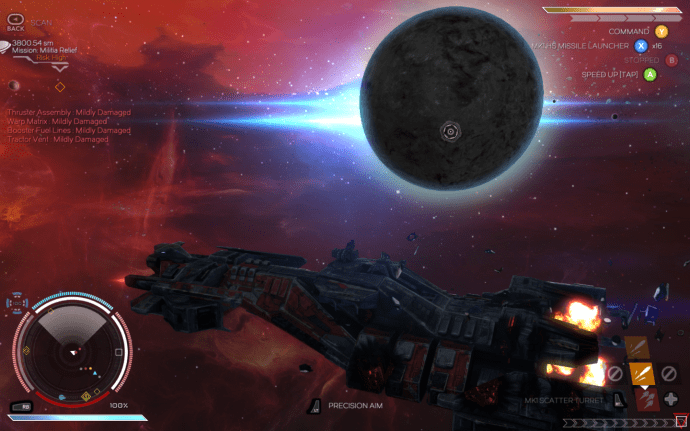
You can manually aim turrets, shown here, or let autopilot take care of that for you.
From handling turrets to engaging in broadside battles, movement in Rebel Galaxy was engineered to feel good—heavy, but not ponderous; responsive, but not totally devoid of realistic physics. Taking another page out of Black Flag’s playbook, Travis designed capital ships with naval combat in mind. The design wasn’t a one-to-one conversion, of course. Naval ships don’t have boosters that propel them at lightning speed, nor an option to slam on the breaks and drift to a halt. As a matter of fact, such actions make zero sense within the context of real spaceships. But in video-game land, anything goes, especially if design decisions seem poised to enhance the player’s experience.
“One way I describe them—and it doesn’t do them justice—is they’re like Tonka trucks in space,” Erich said. “They look like they’re made of metal; they feel like they’re metal. They feel like they have mass to them. If they didn’t bang around and smash into things, they wouldn’t feel as good. So I think it was Travis’s engine and all the cool atmospherics that [lent] real heft to the ships.”
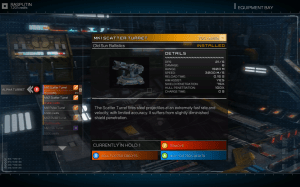
In Rebel Galaxy, Erich and Travis didn’t want players to just fly a ship. Doing away with player-character avatars, Rebel Galaxy effectively casts players in the role of their ship. “We don’t have stats. We don’t have skill points. It’s all economically driven,” said Travis. “At the end of the day, it’s points that you put into a thing to get stronger; in our case it just happens to be money instead of points, and components instead of skill.”
Rebel Galaxy’s metaphor of RPG hero is all-encompassing. There was no reason, for example, for players to disembark and walk around a three-dimensional space station. The fun in Rebel Galaxy is outfitting ships with better and flashier ordinance, and voyaging through rambling galaxies in search of mischief and profit. In other words, all the fun should take place within the ship.
Besides, Travis and Erich reasoned, what would be the point of letting players get out and walk around space stations? The first time would be novel; every subsequent jog from vendor to vendor, like exploring a town in a RPG, would be tedious. In lieu of roaming town-like areas, players dock at space stations with the press of a button and then navigate a menu to peruse mission postings, buy and sell parts, talk to NPCs, and progress in missions. Because players never leave their ship, the bond between player and vehicle deepens with every decision and course of action.
Maintaining a laser focus on ships provides another benefit: zero risk of excluding players. “You’re not a specific person. You’re a woman, you’re a man—we don’t care,” Travis said. “No one will ever refer to you by gender; that way you can be whatever. It would have been cool if we would have had time to do things like ship paintjobs, because it would have made everything feel that much more connected.”
Seeing is Believing
For all the revision Rebel Galaxy’s controls underwent, Erich Schaefer believes Rebel Galaxy will never be as accessible as he might like. While working on the original Diablo, Erich and his colleagues at Blizzard North instituted the mom test. The idea was that anyone should be able to understand how to play within a few minutes—if not seconds—of starting the game. It’s a litmus test that Diablo passed with flying colors, and that Erich believes Rebel Galaxy is destined to fail.
“People can’t just pick it up and play necessarily. To some degree they can, because we worked on that. But there’s a little more of a hump to get over—how to do this broadside combat, how to steer the ship around. To me, we didn’t hit that super-crazy mom test; my mom couldn’t play this game. [laughs] But we tried to make it as easy as we could.”
In that respect, Erich and Travis succeeded. Rebel Galaxy may not be as straightforward as Diablo—click to walk, click to fight, click to pick up items—but ease of use takes many forms. Over myriad iterations, Travis winnowed and consolidated options to make movement and navigation as simple as possible. A few button prompts placed around the screen describe how to operate the ship. Give it some gas, and the ship begins to inch forward. Press the appropriate key or button again, and the ship picks up speed. A third time, and players reach a comfortable cruising speed. Once a set amount of time passes, they can hold a button to enter warp drive—a teeth-rattling, screen-shaking mode of travel that sends players streaking through the stars.
“Travis actually put that in very early, and it was one of the first moments where I thought, Holy crap—this game’s going to be great,” Erich said. “It just felt so cool. He’s tweaked it a little since, but it’s pretty much how he first put it in there.”
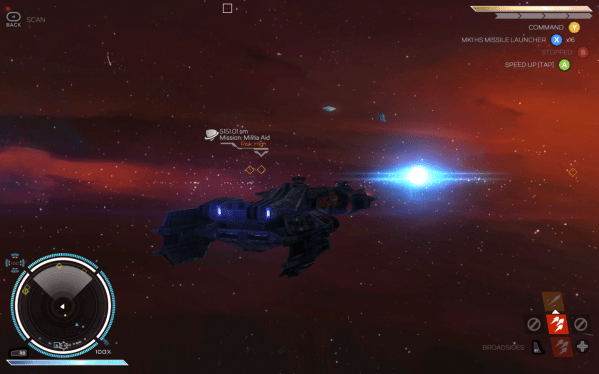
But the biggest contributor to Rebel Galaxy’s relative accessibility is the rebellious galaxy itself. Thanks to Travis’s procedural algorithms, every player begins the game in a different galaxy. Space stretches out before them, huge and infinite—or so the Double Damage pair wants them to think.
“That’s what software is: all game software is smoke and mirrors,” said Travis. “None of these things are really happening. You’re just putting pixels on a screen. I think people can be predisposed to be fine with that.”
**
Bibliography
Fate was the most popular game Travis designed: “SabreWing off on a Wild Tangent.” WCNews.com.http://www.wcnews.com/news/update/2970. [Author’s note: Little information exists on SabreWing. SabreWing3D.com, the website WildTangent created to house and promote the game, is no longer functional, so I listed to this news update for the purpose of preserving a few details.]
Read more about:
Featured BlogsYou May Also Like